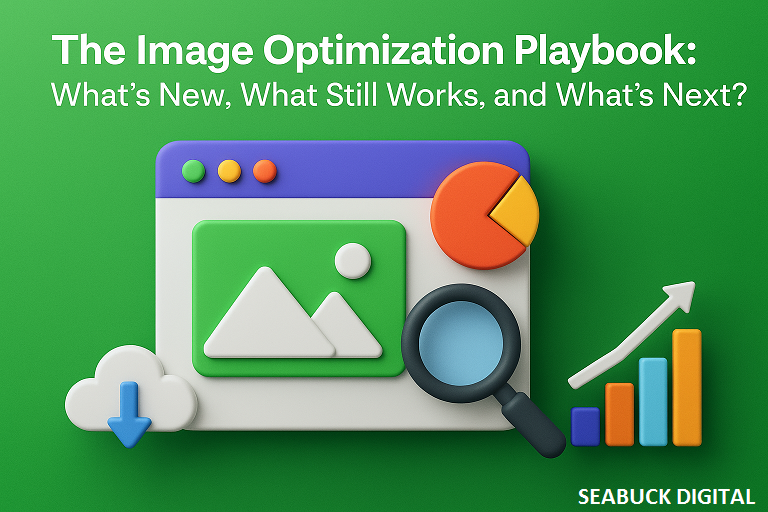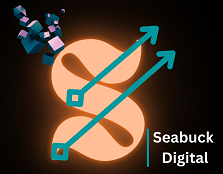
Introduction to Image Optimization
Why Image Optimization Matters More Than Ever
Let’s be honest—nobody likes waiting for a website to load. In the age of instant gratification, every second counts. Image optimization is not just a “nice to have” anymore; it’s a critical part of any website’s performance and SEO strategy. With images making up the bulk of page weight, shaving off even a few kilobytes can drastically improve load times, boost rankings, and create a smoother experience for your visitors.
The Role of Images in SEO and User Experience
Images do more than just decorate a page—they communicate messages, build brand identity, and keep users engaged. But, they also need to be discoverable by search engines. Properly optimized images can help your site rank in Google Images and contribute to better overall SEO health.
Understanding the Basics of Image Optimization
What Does Image Optimization Actually Mean?
Image optimization is the process of delivering high-quality images in the right format, dimensions, resolution, and size while keeping them lightweight for fast loading. It involves balancing image quality and file size, ensuring that your images look great without slowing down your site.
Key Metrics to Measure Image Performance
To really get a grip on your image game, you’ll want to watch a few key metrics:
- Page Load Time: Faster load times = better user experience.
- Image File Size: Keep it as low as possible without compromising quality.
- Cumulative Layout Shift (CLS): Prevent images from pushing content around as they load.
Latest Trends in Image Optimization
The Rise of Next-Gen Image Formats
WebP, AVIF, and JPEG XL are shaking up the image game! These formats provide superior compression and quality compared to old-school JPEGs and PNGs.
WebP, AVIF, and JPEG XL Explained
- WebP: Developed by Google, offers great quality at smaller sizes.
- AVIF: Even better compression than WebP, perfect for high-res visuals.
- JPEG XL: Emerging as a powerful option for photography-heavy sites.
AI-Powered Image Compression Tools
AI is not just for chatbots anymore. Tools like TinyPNG and ShortPixel use smart algorithms to compress images without sacrificing quality, making automation a breeze.
Responsive Images for Multi-Device Experiences
Responsive images adjust based on the screen size, ensuring fast load times across all devices. The <picture> element and srcset attribute are your best friends here.
Lazy Loading and Its Impact on Page Speed
Lazy loading delays the loading of images until they’re about to enter the viewport. This means your pages load faster upfront, keeping bounce rates low and performance high.
Image CDNs: Speed Meets Scalability
Image-specific Content Delivery Networks (CDNs) like Cloudinary and Imgix serve images from locations closest to your users, speeding up delivery while optimizing them on the fly.
Best Practices for Effective Image Optimization
Choosing the Right Format for Every Image
Not every image needs to be WebP. Use:
- JPEG: For photos.
- PNG: For transparency.
- SVG: For logos and icons.
- WebP/AVIF: When you need the best balance.
Properly Compressing Without Losing Quality
Find the sweet spot. Use tools like Photoshop’s “Save for Web,” or online compressors to reduce file size without making your images look like pixel soup.
Descriptive File Names and Alt Text for SEO
Name your files with descriptive keywords (e.g., “blue-running-shoes.jpg”). Also, don’t skip the alt text—it helps with accessibility and SEO alike.
Utilizing Image Sitemaps
An image sitemap helps search engines discover images they might otherwise miss, giving you extra visibility in image search results.
Optimizing Thumbnails Separately
Thumbnails deserve their own optimization. Keep them small and ensure they don’t slow down your category pages.
What Still Works in Image Optimization
Manual Compression Techniques
Good old manual compression still does wonders. If you have a small library of images, manual tweaking can offer pixel-perfect results.
Caching Strategies
Leverage browser caching and CDNs to store images closer to users. Cached images load almost instantly on repeat visits.
Keeping Images Relevant and Contextual
Don’t just slap any image onto your page. Use images that are relevant to your content, enhance understanding, and add genuine value.
What’s Next for Image Optimization?
AI-Generated and Adaptive Images
Imagine AI generating perfectly optimized images for each visitor based on their device and connection speed. The future is closer than you think!
Image Personalization for User Segments
Tailoring images for different user segments (like showing region-specific images) can increase engagement and conversion rates.
Potential Role of Blockchain in Image Authenticity
Blockchain could soon help verify the authenticity of images, combating copyright issues and deepfakes. It’s an exciting frontier!
Common Mistakes to Avoid
Over-Compression Leading to Poor Quality
Yes, smaller is better—but not when it ruins your visuals. Always preview compressed images before publishing.
Ignoring Mobile Optimization
Mobile users dominate the web. If your images aren’t optimized for mobile, you’re leaving performance and conversions on the table.
Skipping Alt Text Altogether
Alt text is not just for SEO; it’s essential for accessibility. Don’t skip it—it’s a small effort with big rewards.
Tools and Resources for Image Optimization
Best Free and Paid Tools
- TinyPNG
- ImageOptim
- ShortPixel
- Cloudinary
- Kraken.io
Plugins for WordPress and Other CMS
- Smush
- Imagify
- ShortPixel Plugin
- EWWW Image Optimizer
Conclusion
Image optimization isn’t just about shrinking files anymore—it’s a full-blown strategy. From next-gen formats to AI-powered tools, there’s a whole playbook to follow. Stick to the best practices, stay updated with trends, and always think about your users first. When you do, you’ll not only speed up your site but also climb those search rankings and keep your audience happily engaged.
FAQs
What is the best image format for websites?
It depends! For general use, WebP strikes a great balance between quality and size. But for ultra-high-quality needs, AVIF is leading the pack.
How do I optimize images for mobile devices?
Use responsive images with the srcset attribute, keep file sizes small, and test across multiple devices to ensure quick loading times.
Can image optimization improve SEO rankings?
Absolutely. Faster-loading images enhance user experience, reduce bounce rates, and give your site an SEO boost.
What’s the role of alt text in image optimization?
Alt text describes images for search engines and visually impaired users. It’s crucial for SEO and accessibility.
Are there risks to over-optimizing images?
Yes—over-compression can make images look blurry or pixelated. Always balance optimization with maintaining visual quality.
Read More:

